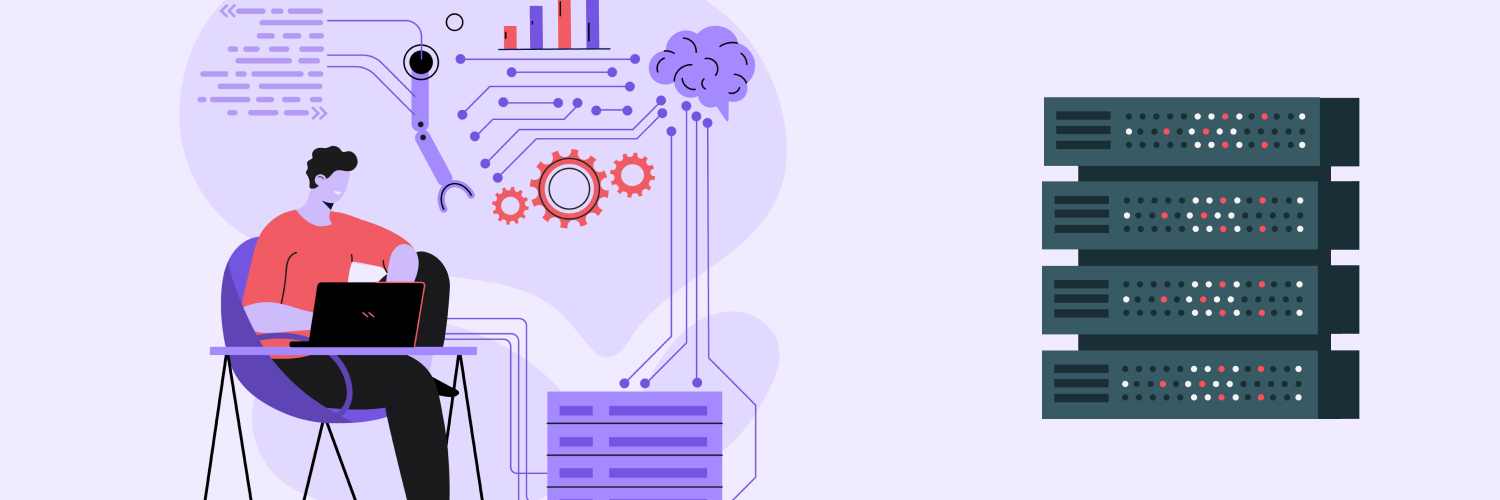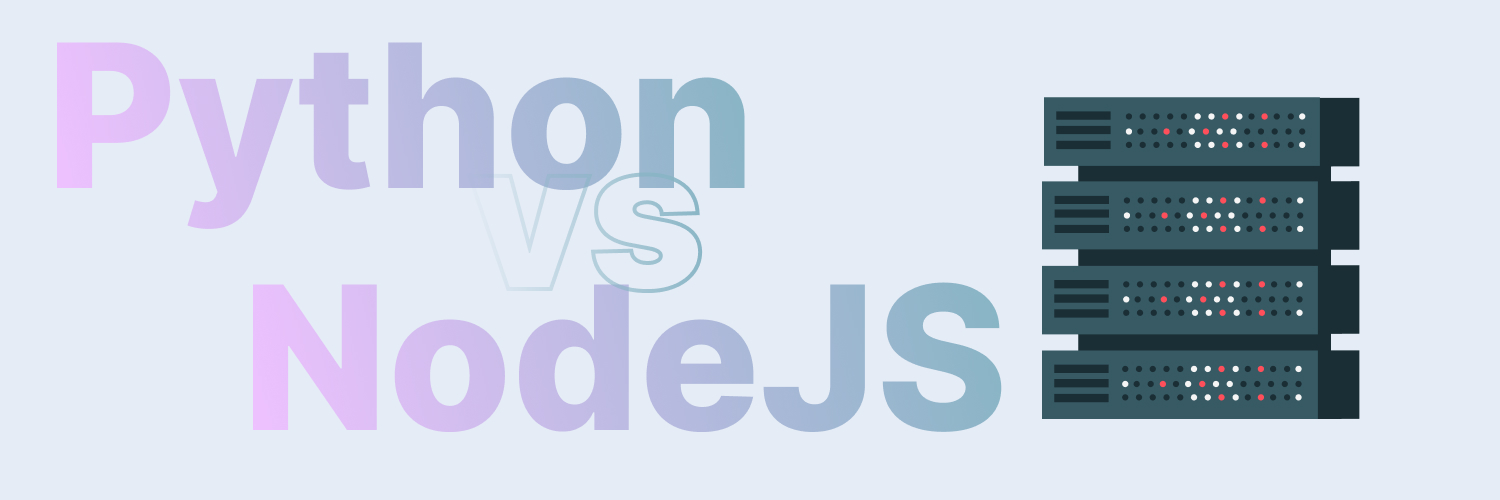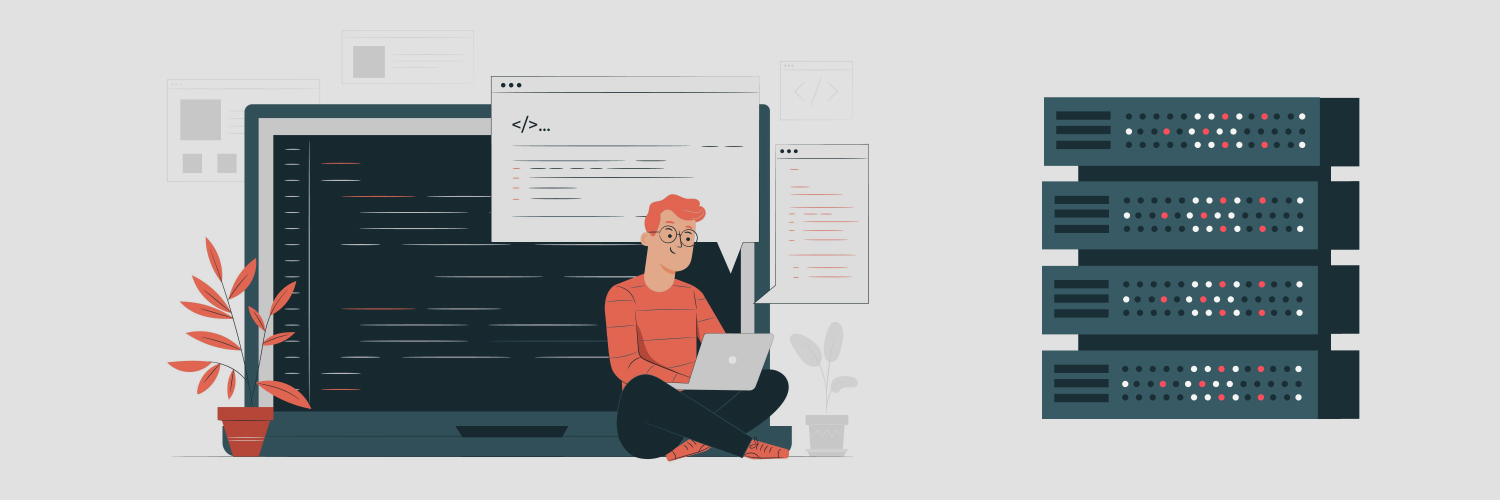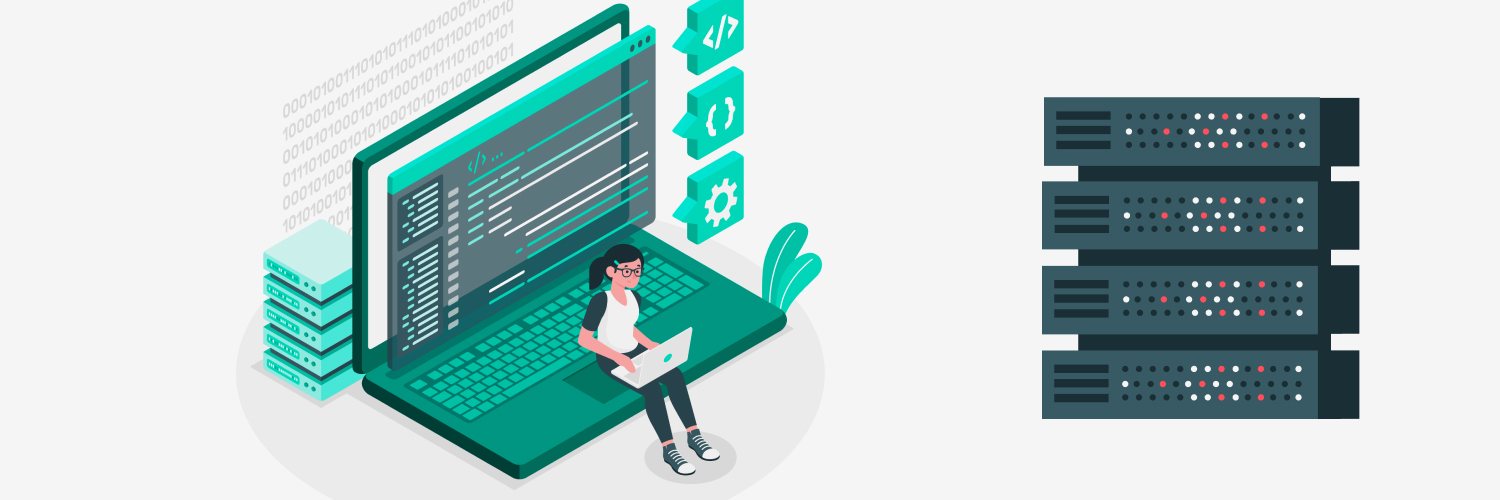How Proxies Make Price Scraping Possible (And Useful)
Whether you are planning to step foot into e-commerce or kick-start a travel business, it is essential to ensure you price your products correctly. Today, there are thousands, if not millions, of e-commerce stores in a single industry.
Therefore, customers have a wide range of choices, which gives them the liberty to switch to another company or store if your prices are unfavorable. But what if you have 1000 competitors? Would you manually go to each competitor’s website and note the cost of each product they sell? That is bound to be time-consuming and tedious.
Fortunately, price scraping helps you price your products in a market-competitive and reasonable way for the customers. Below, we discuss how to scrape prices and why price scraping can help your business progress.
What Is Price Scraping?

Price scraping is the process of extracting pricing information from your competitors’ websites using a price scraping tool, a web crawler, or a bot. These tools find the relevant data and copy it from the competitors’ websites to an analyzer for later use.
Since companies do not want their competitors to learn from their pricing models and ranges, many businesses make it difficult to scrape their websites. So it is vital to choose the best price scraping tool to scrape prices from websites.
Price scraping tools work like real-life web users. They navigate your competitors’ websites and extract the information you need. Price scraping allows you to curate customized, large datasets at a meager cost. The information collected through price scraping is further used to make critical business and marketing decisions.
Automated price scraping using price scraping tools has become an integral part of businesses now. Since the tool takes care of the scraping process, you can save a lot of time that can be used on other key business areas that need critical and creative thinking.
How Does Price Scraping Work?

Before you can even begin scraping prices, you have to be sure about your competitors. Who are they? How many competitor websites do you plan to scrape?
For instance, if you sell moderately-priced handbags, you do not need to scrape any designer brand’s website. Think about other companies or brands in your industry who are selling the same product as you.
Also, make sure their products are targeted at the same consumers. Once you know who your competition is, you can start scraping prices. The two main steps of price scraping are:
- Targeting Websites: Firstly, the price scraping tool gets access to the target website. It tracks the website’s activity and observes if there are any price differences and data changes.
- Data Extraction: After getting access to the website, the bot extracts relevant data. It records this data into databases or spreadsheets. From there, companies can further analyze the data.
Sure enough, the working mechanism of web scraping tools is more complex than this simple description. However, these two steps form the backbone of the price scraping process.
Now that you know what price scraping is and how price scraping software works, let us look at the involvement of human intelligence in the process. While a price scraper may do most of the work for you, it is essential to leverage the critical thinking of human intelligence to make the right pricing decisions.
With the right professionals on board, you can ensure that the data is being used to meet the company’s goals. Otherwise, you may find no use for the data that you have collected through price scraping.
After the data has been collected, relevant professionals, such as marketers and product managers, study the data to set the pricing strategy according to one of the following types:
- Premium Pricing: This pricing strategy is beneficial in industries where there is a strong competitive advantage. Companies can use the data gathered through price scraping to determine if their product has the upper hand over the competitors’. Then, they can give their products a higher price point.
- Penetration Pricing: You may do this during the promotion period for a product. After this period is over and substantial attention has been garnered from the customers, prices can be increased.
- Economy Pricing: This kind of pricing targets the mass markets. Some examples include local tea producers or dish soap prices.
Human intelligence is also needed for something called a skimming strategy. In this strategy, a company charges a high price for a product because it does not have many competitors.
If you are one of the few plus-sized apparel brands, you can charge a higher price for your products unless there are more competitors who may offer lower prices to attract consumers.
While a price scraper tool can find information, it cannot make decisions for you. The job of decision-making falls in the hands of human personnel.
Benefits of Price Scraping for Businesses

By now, you should know what price scraping is and how scraping prices from websites can facilitate the business processes for you. Now, let’s discuss how you can use price scraping to grow your business.
Having a pricing strategy will benefit your business in the long run and offer instant benefits. Strategic pricing revolves around keeping the product prices at a level that is deemed reasonable by the customers and is also profitable for you as a business.
24% of product developers say they revise their product strategies every day. They do so by tracking the product prices of their competition. Meanwhile, 30% of companies do price monitoring at least once every week.
Here is why it is important to have a pricing strategy in action:
Insight into pricing trends
If you want to win with your pricing strategy, you must follow the current industry trends. Suppose you are introducing a new product into the market. You need to identify the user interaction and pricing behavior of that product.
Price scraping is one of the most effective ways to identify these trends. The four major trends that impact pricing are:
- Dynamic Pricing: This refers to the ever-changing product prices. The price of some products tends to change regularly in response to supply and demand. For instance, the cost of healthcare and sanitary supplies shot through the roof when the pandemic hit. Similarly, prices for decorations and gifts are different during the holiday season compared to the rest of the year.
- Customized Pricing: The customers’ willingness to pay a specific price for a product can differ based on the value the product provides. Thus, companies offer different up-selling and cross-selling options to differentiate between prices. Price scraping can help you understand which cross-selling and up-selling strategies are benefitting your competitors the most.
- Digital Pricing: Refers to the process of revising prices to make them more beneficial to customers.
- Behavioral Pricing: This type of pricing is based on how customers behave. Companies use data to determine whether they should raise or reduce prices based on customer behavior.
Obviously, it will not be possible for you to keep up with these trends unless you have sufficient data about them. With a price scraper, you can keep track of the price changes in your industry and price your products accordingly.
Real-time competitor analysis
Product prices change from time to time in response to different things, such as weather and product demand. For example, the flight prices may be priced differently during the holiday season than at other times of the year.
Typically, price scrapers scrape data at one point in time. They do not update this data every second. Therefore, it is crucial to opt for real-time price scraping.
In this way, you can run a scraper every hour or every day to determine how the prices are changing at different intervals. Since there is no delay in data updates, you get instant responses from the data scraper that can be subsequently sent for analysis.
Demand forecasting
Price scraping can also be used to forecast product demand.A Research Gate study explained how price scraping is used in Malaysia to compile the Consumer Price Index, which measures the average change in prices that consumers face for goods and services over time.
It is one of the most commonly used economic statistics and is considered a useful proxy for inflation. Stakeholders use CPI to monitor where the economy is headed. Meanwhile, the general public considers it the barometer of economic health in the region.
Businesses can use price scraping to forecast the prices of products with regard to inflation. They can use this information to make the right and quick decisions. According to the study mentioned above, web scraped data will help in forecasting and improve the understanding of price behavior.
Price Scraping Tools

Depending on their specific needs, businesses can use different types of price scraping tools. Although it is possible to scrape prices manually too, the process is expensive and time-consuming. Here are some tools you can use to scrape prices:
Web scraping bots
Web scraping bots or web scrapers automate data extraction from web pages and other data sources. These tools can extract more than just prices from your competitors’ websites.
First off, the web scraping bot will download the robot.txt file from the website. The file contains a list of URLs that the bot then crawls. It accesses these URLs and retrieves the data from them, inputting the information in spreadsheets.
Listed are some benefits of these bots:
- Competitive Price Analysis: The number of products available online for sale today is astronomical, to say the least. If you were to manually go through your competitors’ websites and record the prices for each product, you would lose a lot of time and resources. On the other hand, a web scraping bot can give you quick access to these prices and that too from as many sources as you need. You can then use this information to drive customer decisions and sentiments.
- Gain Leads: If you are new to the business you have started, you may not know much about the audience you should target. Web scraping lets you get information from your competitors’ community portals, social accounts, and forums to identify who is engaging with them. In this way, you can acquire leads and target your marketing and advertising campaigns accordingly.
- Sentiment Analysis: One of the best ways to learn about customer behavior is by reading the reviews. But it is practically impossible to read every review online about all your competitors. Web scraping allows you to gather all this information and gain insight into what satisfies the customers and which features or services they want businesses to introduce. Basically, it helps you uncover the customers’ sentiment and feedback about service campaigns, pricing, and product quality.
RPA bots
RPA bots mirror human interactions with the general user interface and use screen scraping. You can program these bots to access certain URLs and scroll through the web pages.
They can also copy and paste pricing data from the websites into databases and spreadsheets. Advanced bots can also perform more functions like sending extracted data to some users rather than a database.
They can be programmed to modify the data as per a set of rules too.
In-House scraping scripts
If you have a skilled IT team, you can build price scrapers for your organization. In this way, you would not have to rely on pre-built price scrapers. In-house price scrapers can be customized to meet your needs.
However, they have higher costs since you need to hire talent and spend money on servers and proxies.
What Should a Good Price Scraper Do?

A reliable price scraper should be able to harvest certain information from your competitors’ websites. When you scrape your competition’s websites, you have to ensure you gather the data that will help you make decisions for your business.
One of the best scraping solutions in this regard is Rayobyte’s Web Scraping API. The web scraper scrapes websites into JSON with ultimate ease. You no longer have to worry about browser scaling, proxy management, captchas, or blocks.
The whole Rayobyte’s Web Scraping API system was specifically designed for developers. Using the Postman documentation, you can plug-and-play the Rayobyte’s Web Scraping API API in minutes. All APIs provide a JSON structure output for the website’s metadata.
On top of that, you can rest easy knowing that Rayobyte’s Web Scraping API has everything under control. There is no need to worry about problems that often come with scraping, such as proxy management, browser scalability, CAPTCHA-solving, and server management.
The following are the main things your price scraping tool must harvest:
Attributes
Product attributes refer to the features of a product. For a brand selling bags, these would include style, function, size, and color. How are they pricing their satchels as compared to crossbody bags? Is a certain color priced higher?
All of these details help drive customer decisions. When it comes to competition, you have to make sure your products are at least the same or better than what others are selling. Other products being sold in the market largely influence how a customer will engage with your product.
How you present product attributes will determine the feelings and sentiments your item invokes in the customer. The attributes can be categorized into two groups:
- Points of Difference: These are the points that make your product different from that of the competition. When you use a price scraper, you can get this information readily. Maybe, your competitors are focusing more on neutral colors. Or, they may be making more functional bags than statement pieces.
- Points of Parity: These are the pointers that make your product similar to that of the competition. For instance, the material you use in your bags may be the same as the one your competitors use.
If your product lacks points of parity, you will be unable to boast about how you offer the same features as your competitors. Similarly, if you lack points of difference, your product will not be unique. In both of these cases, the product is not likely to do well.
But if you use the information gathered by the price scraper, you can determine which points you need to focus on to stand out from the competition and make your mark among consumers.
Determine the dissatisfiers
A good price scraper should also be able to retrieve dissatisfiers. These are product attributes that put customers off a product. Products with these attributes do not sell or are generally unpopular among consumers.
Dissatisfiers may be a certain style or a flaw in the design. For instance, “fake” and nonfunctional pockets on jeans may be a dissatisfier for apparel brands. When you are designing your product, it is important to eliminate or minimize dissatisfiers. This will increase the product’s appeal.
Product name
Another integral piece of information that a price scraper should retrieve from the competitors’ websites is the product names. If you want to be unique, you have to ensure your product names are not the same as that of your competition.
It not only affects your uniqueness, it could also confuse the customers, taking away attention from your product.
Price and promotion
According to the Harvard Business Review, a company’s pricing strategy sends a message in the market. It tells customers about the company’s philosophy.
Pricing is the most flexible thing in a product. You can change the price of your product or service as required. On the other hand, it is difficult, and sometimes impossible, to change other things, such as the product design.
Similarly, if you had to change the distribution system, it would take quite a long time. Meanwhile, pricing can be changed for advertising and marketing needs.
Therefore, you can use price scrapers to get data pertaining to your competition’s pricing strategies and implement similar trends in your pricing strategy. Likewise, you can use the data to determine how your competitors lower the prices during sales and promotions.
How often do the products go on sale? Which discount percentage appeals the most to the customers? This is the price that customers are most willing to buy a product for. Data churned out by price scrapers will give you an insight into customer behavior and how price impacts it.
According to a report by McKinsey, companies that use customer behavioral insights tend to outperform their competition by 25% in gross margin and 85% in sales growth.
If your products are way too expensive compared to the competition, you will not attract customers. Why would someone buy a product for $100 from you when they get the exact same thing for $60 from another store?
Similarly, if your prices are too low, customers may be skeptical. Plus, you will not make sufficient profits.
Using the data gathered through price scraping, you can maintain a proper balance between the sales volume and profitability by pricing your product right.
Product description
Your product may not be selling because the product description needs to be tweaked a little to spike the visitor’s attention. The product description should be accurate and written to prompt the reader to purchase the product.
50% of shoppers have returned the item they purchased online because it did not match the website’s product description. Nowadays, customers regard website content as very important when purchasing a product online.
Using a feature-rich price scraper will give you an upper hand since you will learn from your competitors before writing a description for your product.
Role of Proxies in Web Scraping

Price scraping is a subcategory of web scraping, and proxies are an important component. They have an imperative role to play in web scraping, especially if you are doing it for price comparisons.
When you use price scrapers in combination with proxies, you have a better chance of getting your desired information and without the risk of being banned.
How does a proxy server work?
Proxies are third-party servers that let you route your request via their servers, using their IP addresses to accomplish this task.
You can think of the proxy server as an intermediary between the target website and the user. The proxy server will have an IP address. When you use it to make a request on the target website, the website will receive the request from the proxy’s IP address.
It will then send the information back to the proxy’s IP address too. The information will then be forwarded to the user.
Types of Proxy Servers

As their demand increases, it is important to understand different types of proxy servers and how they work. Depending on your organizational requirements, you can choose one of the following types of proxy servers.
Forward proxy
A forward proxy server is a server that users put as an intermediary between themselves and the target website. In this way, they can make requests to the target website as per the internet use policies of the administration. Some requests might be denied, such as access to personal social media accounts.
Forward proxy servers use mostly three types of IPs:
- Mobile IPs
- Residential IPs
- Data center IPs
As mobile and residential IPs are more likely to imitate legitimate users, most web scrapers covet them.
Reverse proxy
A reverse proxy is at the side of the web server. It gets user requests to access data and chooses to deny or accept them. The decision depends on the bandwidth load of the organization. As a result, the website can avoid Denial of Service attack overload.
Benefits of Using Proxies

Regardless of their size, businesses can gather valuable data through proxies and use it to make informed decisions and understand market insights. Here are some benefits of using proxies in price scraping:
Higher security
When you add an intermediary between you and the target website, you make yourself more secure. Proxies also maintain your privacy by hiding your IP address from the target website’s server.
Access region-specific content
If you are using a price scraper for curating a pricing strategy, you may want to get information about pricing from different geographical regions. Similarly, if you want to expand your business into a different country, you would want to know about the local pricing ranges in your niche.
However, business websites restrict traffic coming from other geographical regions. But if you use a proxy server, you can access regional content without any limitations.
Moreover, if a website gets too many requests from the same region, it may mark the user as suspicious. If you use a proxy server and access websites in different regions, you are less likely to be banned.
Avoid bans
Many businesses have a “crawl rate,” which is the limit of requests they approve from scrapers since they do not want too much of their data to be crawled. If price scrapers are constantly sending requests, it can also slow down the target website.
Using a sufficient proxy pool can get past this rate limit since you can send multiple requests from different IP addresses.
Suppose a target website only allows five requests from a scraper. If you are only using one proxy, you will be limited by the crawl rate. If you send any more requests, the website may ban the IP address.
On the other hand, if you use a pool of proxies, you will be able to send several requests without facing an IP ban.
Scraping at high volume
Although it is not programmatically possible to identify the presence of a scraper on a website, some patterns can show the website that it is being scraped. If a scraper has more activity on a website, it will be easily tracked.
For instance, a scraper may only access a website at a certain time of the day. This puts it at a higher risk of being banned and detected. Meanwhile, if you use proxies, they provide you privacy and anonymity, making it easier to access websites and avoid bans.
Should You Use a Proxy Pool?

If you only use a single proxy to scrape a website, it will increase your risk of getting detected by the target website. It will also lower your reliability and response time. Since websites typically have a crawl rate, you will not be able to send more requests for price scraping.
A solution to this problem is building a proxy pool. You can route your request through several proxies rather than just one. It will allow you to split the traffic over multiple proxies.
But how big should your proxy pool be? This depends on the following factors:
- Number of Requests: How many requests do you intend to make per hour? If you want to make more requests, such as for real-time price scraping, you will need a bigger pool. But if you only want to scrape prices once a day or once an hour, a smaller pool will do the job.
- Target Websites: If your target websites are bigger or have a complex anti-bot measure in place, you will need more proxies in your pool. Smaller websites can be scraped with fewer proxies too.
- Type of IPs: What type of IPs will you use? If you use residential IPs, they are at a lower risk of getting detected. Meanwhile, data center IPs have a higher risk of detection but offer faster response times.
- Quality of IPs: The IPs you are using for price scraping also determine the size of your proxy pool. If they are high-quality IPs, you will not need a bigger pool to accomplish your task. For instance, Rayobyte has private dedicated proxies, the highest quality you can expect from an IP. Public and shared proxies are not as efficient. So, if you are using them, you will need a larger proxy pool. As for the IP type, data center IPs are low quality compared to mobile and residential IPs.
- Proxy Management System: How sophisticated is your proxy management system? Fortunately, Rayobyte manages everything from sessions and throttling to rotation, so you do not have to worry about this.
Keeping all these factors in mind is vital to ensure the effective functioning of your proxy pool. Otherwise, you will find your proxies getting blocked.
How many proxies do you need to scrape prices?
You can use a simpler formula to determine the number of proxies you will need to scrape prices.
Number of proxies = number of access requests/crawl rate
In this formula, the number of access requests is dependent on the pages you want to crawl. It also depends on the frequency with which a scraping tool crawls a website. For instance, it may crawl a website every hour, every day, or even every minute.
Crawl rate is also an important factor since many websites only allow a certain number of users and requests they accept in a minute. In doing so, they differentiate between requests from automated sources and humans.
How to Use Proxies with Price Scraper Tools?

You can use a proxy with price scraping software to reap all the benefits discussed above. In this regard, you have two options:
- In-house proxy
- Outsourcing proxy
In both cases, the standard procedure begins with the software sending requests to multiple forward proxies. These proxies then make requests to the target websites.
Here is what you can expect to get from an in-house proxy and proxy vendor.
In-House proxy
If you have the technical finesse and the budget for it, you can use in-house proxies. These proxies give you full control over your tasks. Keep in mind that building these proxies and maintaining them for long-term use is an expensive and time-consuming process.
That is why many businesses opt for off-the-shelf proxies sold by vendors.
Proxy vendors
A proxy vendor makes web scraping easier since you get a pre-built, customized solution for your needs without spending any extra time on it.
Rayobyte is an incredible vendor in this regard, offering proxy management and web scraping services to small companies, government agencies, and Fortune 500 companies.
Proxy IPs have unfortunately been associated with unethical activities for too long. However, the truth is that all companies, big or small, use proxies for different business processes. Rayobyte does proxy management the right way, ensuring access to zettabytes of information on the Internet that you can use to your advantage.
Types of Proxies

When using proxies in conjunction with price scraping software, you should know about the different types of proxies that you can use.
Data center proxies
Data center proxies are not associated with an Internet Service Provider. These proxies are widely used to scrape prices since they provide value for money. They are also easier to acquire and have fast response times.
You can also choose data center proxies that work privately and are used by one person at a time. These proxies boost the response times. Data center proxies are best for competitor scraping and business intelligence since you can work with multiple proxies.
So, if you want to scrape prices from your competitor’s websites, you can use data center proxies to get this information. Even better, they are cheaper than other types of proxies.
Rayobyte provides data center proxies to businesses for price scraping and other purposes. These proxies are not only reliable but also offer widespread utility. Here are some features that make Rayobyte a hit:
- 9 ASNs: Rayobyte’s data center proxies offer the maximum diversity and redundancy with 9 ASNs. Often, websites only ban a single IP at once. But what if they ban the whole ASN? In that case, your scraping process would come to a halt. You do not have to worry about this with Rayobyte since the proxies will instantly be rotated to one of the other eight ASNs available.
- 27 Countries: Additionally, Rayobyte offers proxies from a total of 27 Countries, including the US, the UK, Argentina, Australia, Belgium, Brazil, Canada, China, Colombia, France, Germany, India, Indonesia, Italy, Japan, Mexico, the Netherlands, Pakistan, the Philippines, Poland, Singapore, South Africa, South Korea, Spain, Taiwan, Thailand, and Vietnam. Even better, Rayobyte adds more proxies every month.
- 300,000 IPs: Rayobyte has a diverse proxy pool, ensuring that all your proxies do not get banned at the same time. Due to the massive infrastructure of their proxies, businesses can scrape undisturbed without worrying about bans.
Rotating residential proxies
Data center proxies are not very risky since there is a low chance of you getting detected on the target website. But if you want to totally eliminate your chances of getting detected, rotating residential IPs are the best way to go about it.
Residential IPs have legitimate IP addresses that have a negligible risk of being blocklisted from target websites. If you are using a data center proxy, the website owner may be able to detect that the proxy is coming from a data center and not from an Internet service provider.
However, when you use a residential proxy, its IP address comes from an ISP. Therefore, even if you are detected, the website owner will probably consider you a real person navigating the website.
Rayobyte also offers stellar residential proxies that allow you to access the information you need without getting detected or banned from the website. Here are some notable features of these rotational residential proxies:
- Fewer Bans: Rayobyte’s proxy network is among the most efficient and reliable web scraping solutions made for businesses. Since the proxies have the lowest likelihood of getting banned, they allow businesses to reach their goals efficiently and quickly.
- Commitment to Ethics: Part of the reason Rayobyte is so reliable is the company’s commitment to being ethical. Rayobyte’s partners can limit how their connections are used. Plus, they can opt out of the program whenever they want.
- Customer Support: Rayobyte provides 24/7 support to its customers, ensuring that they always have experts to help them when they need extra assistance. The vendor’s engineers can deal with any situation that may result in downtime or other problems. Whatever your question is, the team has an answer.
Fill out this form today to get started with Rayobyte’s rotating residential proxies.
Final Words

The barriers to entering the market are lower than ever, thanks to the ease of setting up an online store. Therefore, competitive pricing can be a critical driver to attracting new customers and retaining the existing ones.
60% of online customers say pricing is the first criteria that affect their buying decision. When economic conditions are difficult, the percentage goes up.
Whether you are a global enterprise or a small e-commerce business, you should look to scrape prices in your pricing and product intelligence strategy. Doing so will help you thrive in the market and ensure you are at the same place as, if not a step ahead of, your competition.
The information contained within this article, including information posted by official staff, guest-submitted material, message board postings, or other third-party material is presented solely for the purposes of education and furtherance of the knowledge of the reader. All trademarks used in this publication are hereby acknowledged as the property of their respective owners.






